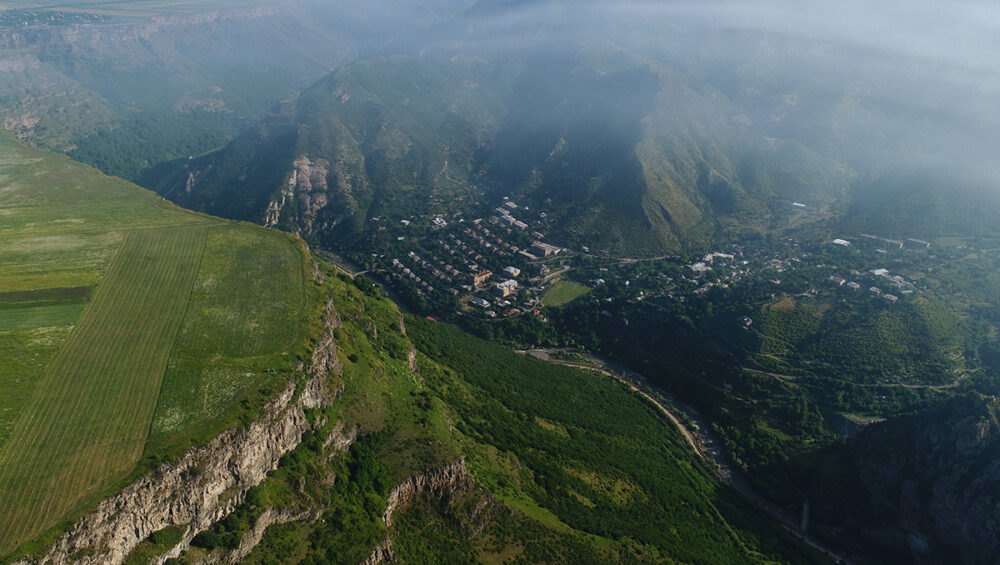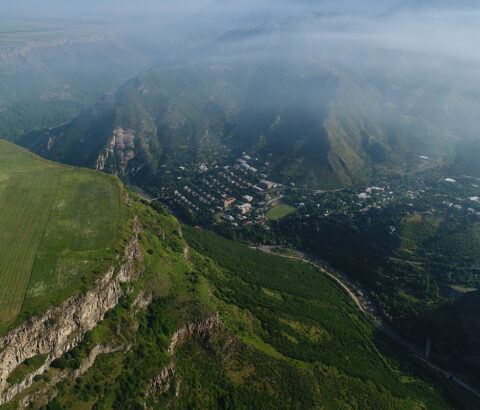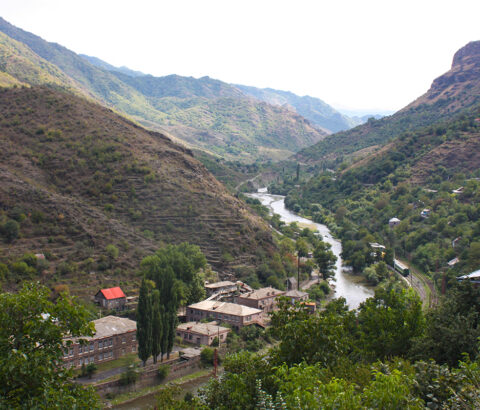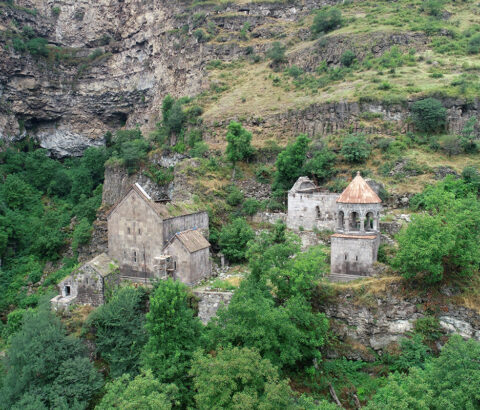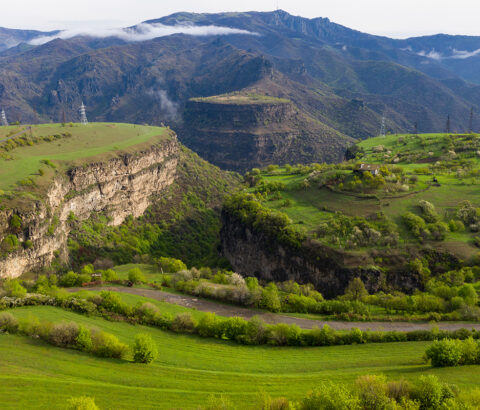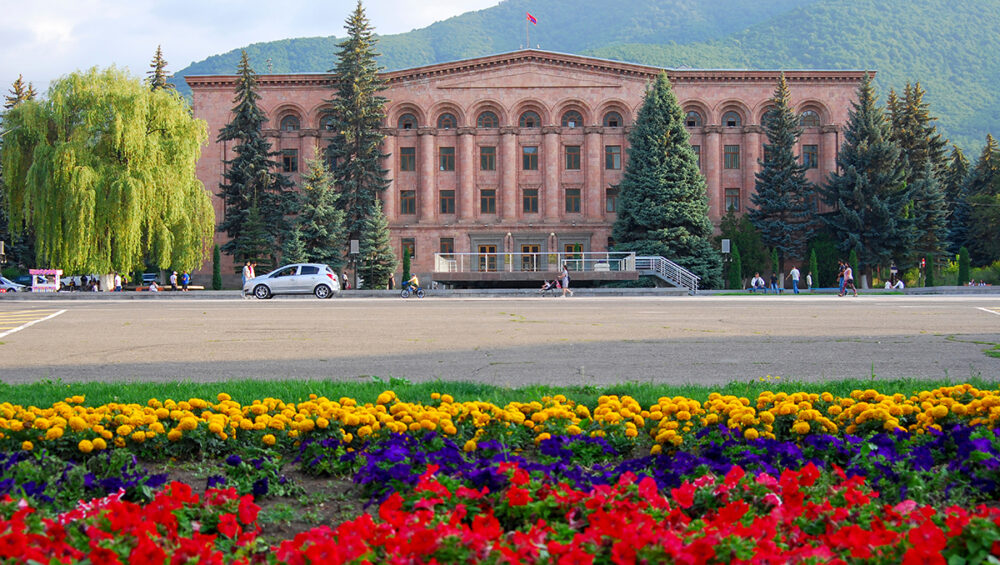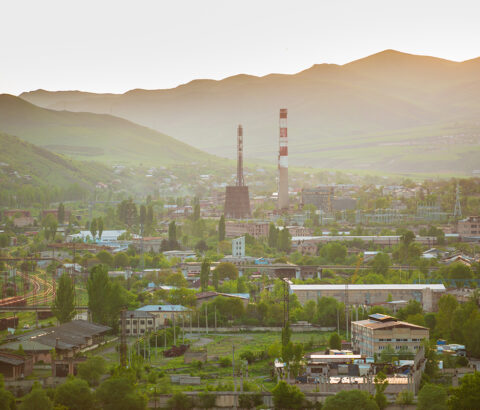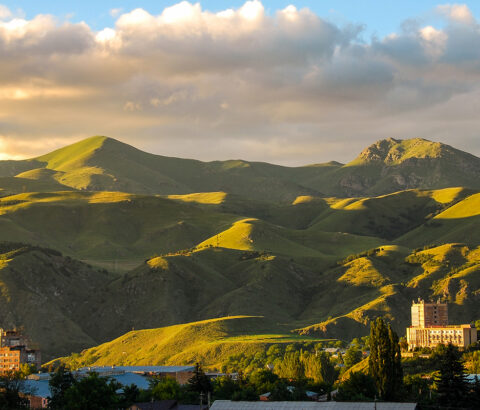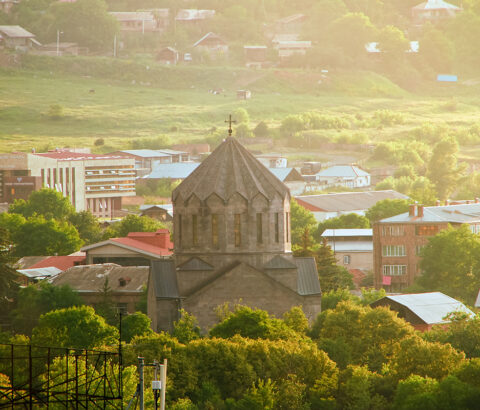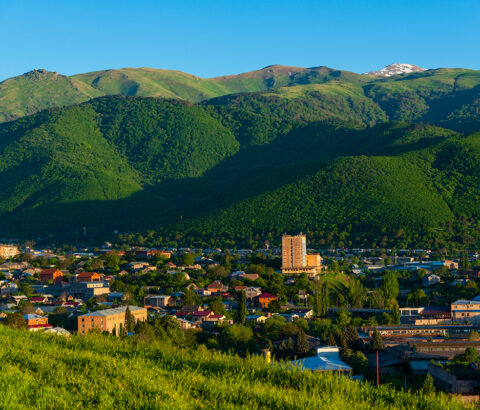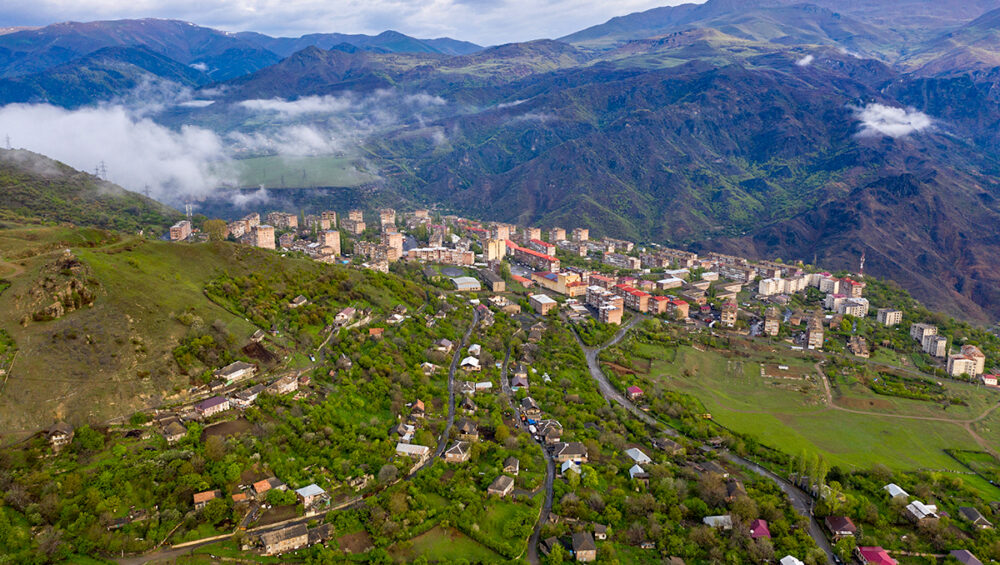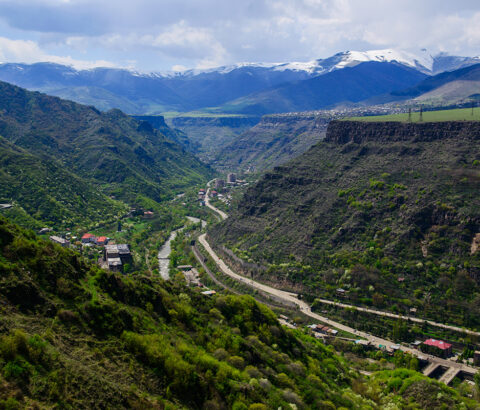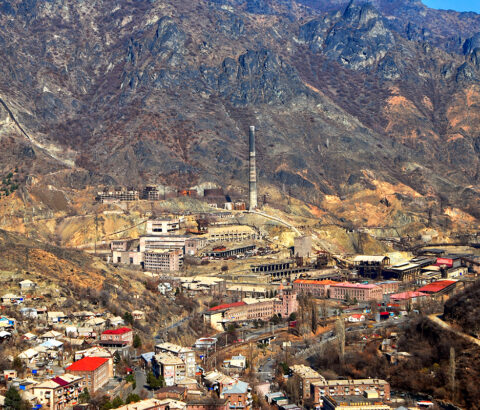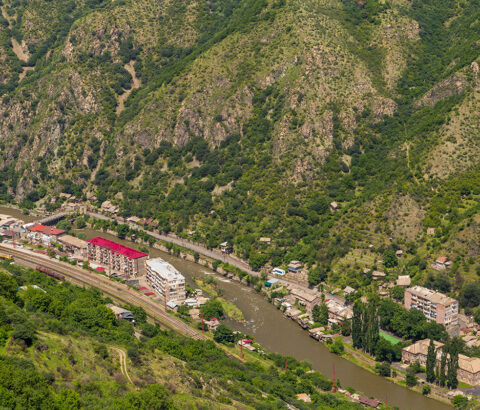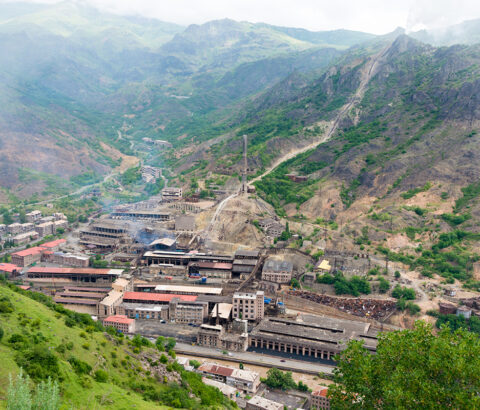Situated on the right bank of Debed river, at an altitude of 810 meters above sea level, the town of Tumanyan is located about 150 km north of Yerevan, and about 40 km north of Vanadzor, the capital of Lori province of Armenia. The town has a population of over 1700 people (2016 estimate). The climate here is subtropical, with relatively hot summers and mild winters.
Historically, the area of the present-day Tumanyan was part of the Dzorapor canton of the Gugark province of the historic Kingdom of Armenia. The town’s history dates back to 1926, when the village of Dzaghidzor was founded. With the foundation of refractory metals mines and launch of the production of fireproof materials in the 1930s, the village grew rapidly.
Dzaghidzor was granted a status of an urban settlement, and was renamed Tumanyan in 1951, in honor of the renowned poet and writer Hovhannes Tumanyan, a native of the nearby village of Dsegh.
Across the road from Tumanyan, on the left slope of the Debed canyon, the 12th-century monastery of Kobayr is located, famous for its Byzantine-style rich and exquisite frescoes. Another medieval monastery, the Bardzrakash St. Gregory, is located on the slope of Marts gorge, but it’s accessible by foot only. Several khachkars (cross-stones) dating back to the 9th, 13th and 14th centuries are found in the town.

